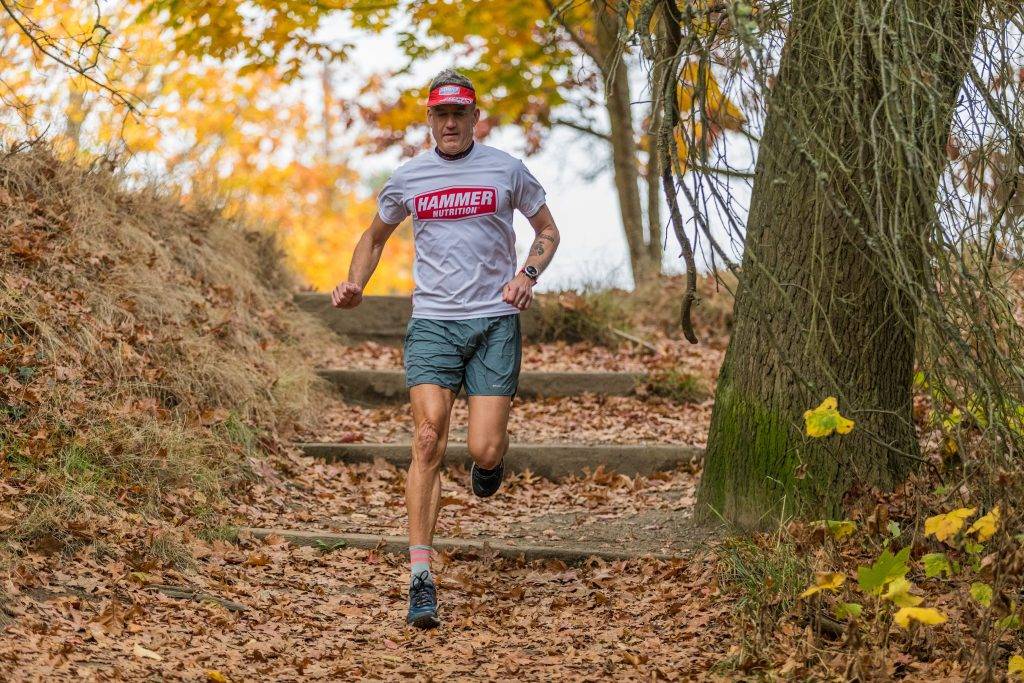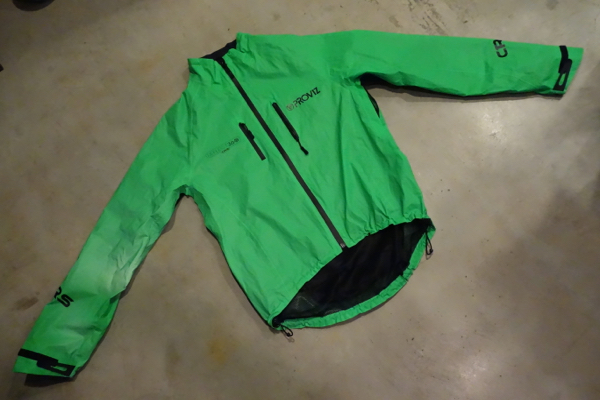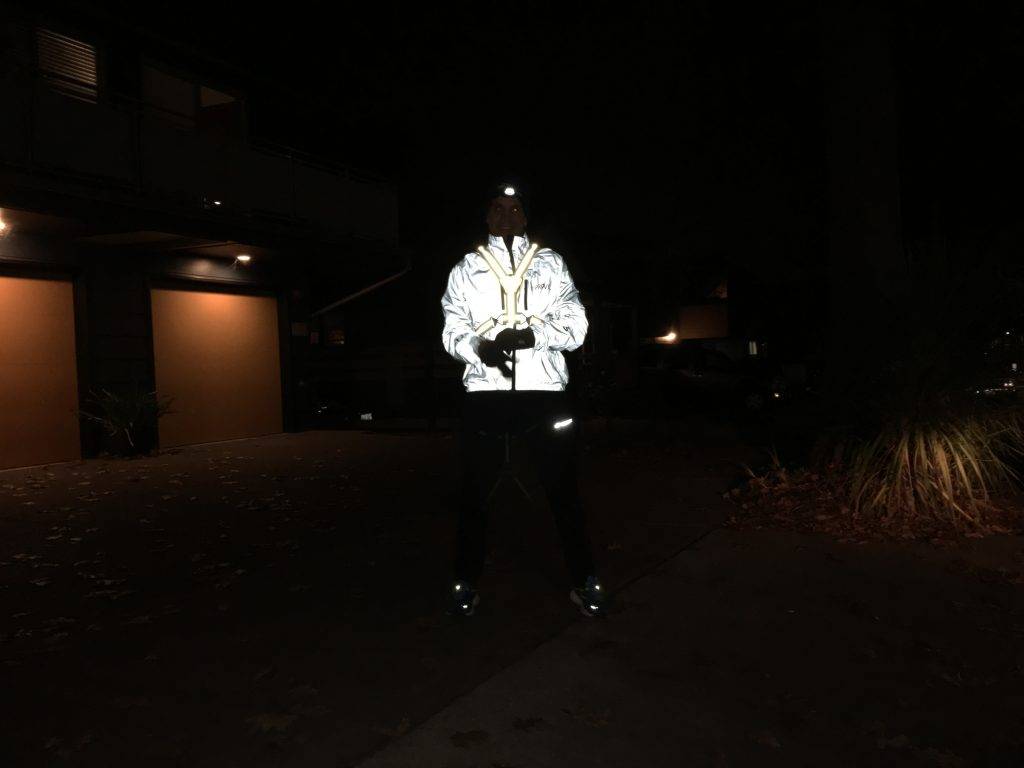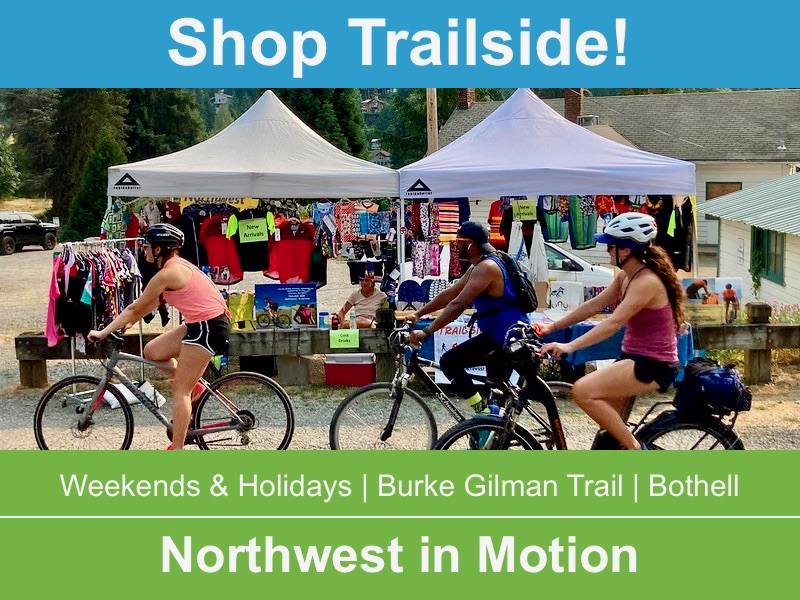The dark season is upon us, which means it’s time for the annual ritual when folks hotly debate the dos and don’ts of running and riding at night.
Seattle native, cyclist, and ultra runner Martin Criminale recommends reflective clothing and rechargeable lights:
“In my experience, neon or bright clothing makes zero difference when it comes to being seen. You either need a light or something that reflects the car’s headlights back at the driver. When I’m running I wear a reflective “harness” and when I’m riding I attach a reflective triangle to my messenger bag. And why add to a landfill? I only use rechargeable lights on my commuter bicycle and headlamp.”

Coach Trisha Steidl, who is currently running in the dark about 3-5 hours per week, has some great suggestions:
1. While wearing a headlamp can make it easier for me to see where I’m running, in most cases I mainly wear one because it allows others (drivers, cyclists, other runners and pedestrians) to see me. Even if I’m running where there are street lights, wearing a headlamp makes me more visible. It also provides the opportunity to shine your light directly at someone if you think they can’t/don’t see you. For example, often when people are driving their car out of a driveway, it can be difficult to see, so I will shine my headlamp into their vehicle so they can’t miss me. Wearing a waistlamp is good, too, but it’s not as easy to shine *at* someone if needed. Make sure you are regularly checking the battery strength of your lights so you don’t get caught out on a run with no light.
2. I wear a bright, light green backlight on the strap of my headlamp so I’m visible from behind. The one I use is easy to clip on pretty much anywhere and stays tight and in place. I find the green to be more visible than the typical red. Some red lights aren’t very bright, so test them out ahead of time to ensure the one you are using is bright and easy to see from far away. Cars coming from behind, going the same direction as I am, can better see me. This can be especially helpful if there are streets or driveways to turn into that I will be crossing. The light I use can either flash or shine steadily. I tend to keep it on steady so there is never a time when light isn’t emanating out from me. All it takes is a split second…

3. Wearing brightly-coloured clothing is always a good idea, but knowing what is actually bright and isn’t seems to be difficult to judge. For example, orange can be a bright colour, but it isn’t automatically. I was out running the other day and did not see a man running towards me until he was quite close despite the fact that he was wearing an orange shirt (and black/navy shorts) because it wasn’t a bright orange. Bright whites, greens, yellows, oranges, and even a few blues can be easily seen. I recommend wearing bright-coloured clothing in addition to using lights or reflective gear.
4. Reflective gear is always helpful. Wearing the reflective pieces on the upper half of your body makes you more visible, but having reflective pieces anywhere is still better than nothing. Reflective and light up vests are highly visible and great options for in-city runners and run commuters. The more reflective pieces you are wearing, the better. That said, be sure to check that the reflective pieces are actually reflective. Especially on clothing or items where rubbing can occur, it can be abraded off over time. Also, some gear touted to be reflective only has one small area that is so, or doesn’t do a good job of actually reflecting. Go outside with someone else who can shine a flashlight or even car lights to see how reflective your gear is actually. Some things look highly reflective when a photo is taken using a flash, but in real life conditions the reflectivity isn’t as great.
Trisha recommends these reflective vests, light up vests, and reflective apparel:
Amphipod Xinglet
NOXgear Tracer 360
Brooks Running reflective clothing

“The best practice is to use two or more of these options in case one fails (e.g., light burns out, battery dies, shirt isn’t actually bright, etc.) and because the more things that can catch the eye of others, especially drivers, the more likely it is you’ll be seen and, thus, safer.”
“Dawn and dusk are tricky because it’s light and not-light at the same time. Wearing some sort of light at these times of day is most helpful because you have light shining out from you rather than relying on reflectivity that may not work well in these conditions, or bright-coloured clothing that may blend in with the light. Light emanating from you will be seen when other options may not be as easily visible.”
“The biggest mistake I see runners make is thinking they don’t need to make themselves obviously visible because they are running on sidewalks where there are street lights. It’s still so difficult to see. Do your part to help others see you!”
A tip for drivers:
“If you’re driving towards a runner (or cyclist), shining your brights doesn’t make it easier for us to see. It’s blinding and makes it almost impossible to see where we’re headed. Good intention, but it has the opposite effect.”
WSDOT has these tips for safely walking or running during the dark season:
Try to cross the roadway at lighted intersections – it might mean walking a bit further, but it’s where a person driving a vehicle might better see you and expect you to cross. Don’t ever think that a marked crosswalk will protect you – by law drivers are supposed to stop to let a person cross the roadway at ALL intersection crosswalks – marked or not – but apparently not everyone has received that message.
Never assume that if one person stops for you to cross the roadway, the person in the next lane will. I hang back in front of the stopped vehicle until I’m sure the person in the other lane plans to do the same. Again, the law tells drivers to stop when they see another stopped vehicle, precisely because they don’t know what’s beyond their line of sight – but not everyone does that. Walk on the sidewalk if there is one; otherwise walk facing traffic so you can see what’s coming at you.
If there’s a running vehicle in a driveway, make sure the person driving sees you before you cross. It’s worth the wait to see their surprised face rather than to have to try to dodge out of the way.
Be wary of crossing in front of drivers turning right; they often approach the intersection with their heads cranked to the left, looking for an opportunity to enter traffic. When they start moving and finally realize I’m standing at their passenger window, I like to smile, wave and thank them for not killing me.

